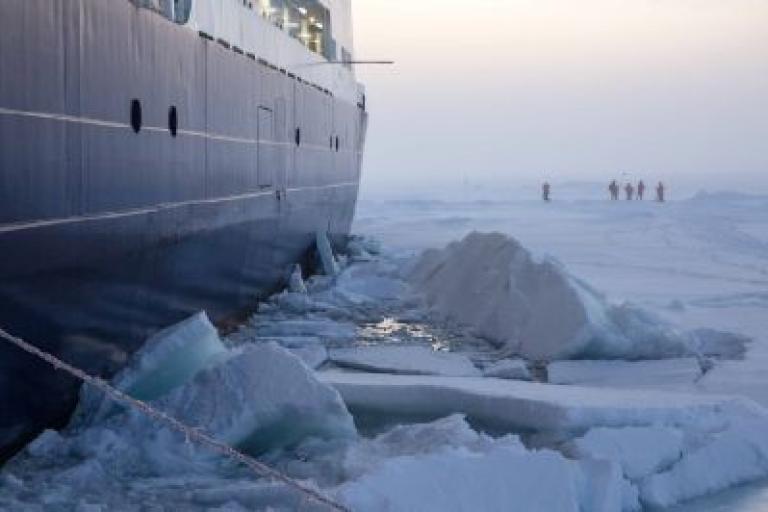Arctic research project successfully launched
The most ambitious Arctic research expedition ever undertaken has got off to a successful start. Frozen in the Arctic sea ice, scientists from 17 nations will conduct research at the epicentre of climate change on board the German research icebreaker RV Polarstern for an entire year.

The most ambitious Arctic research expedition ever undertaken has got off to a successful start. Frozen in the Arctic sea ice, scientists from 17 nations will conduct research at the epicentre of climate change on board the German research icebreaker RV Polarstern for an entire year.
The Multidisciplinary Drifting Observatory for the Study of Arctic Climate (MOSAiC) involves a total of 600 scientists who will investigate a region that is virtually inaccessible in winter, and which is crucial for the global climate. They will gather urgently needed data on the interactions between the atmosphere, ocean and sea ice, as well as on the ecosystem. Results from the mission will help scientists improve models and forecasts of local, regional, and global weather and climate.
Polarstern departed from Tromso in Norway on 20 September, escorted by the Russian icebreaker Akademik Fedorov. On 4 October, the expedition announced it has selected the ice floe which will serve as its drifting base for the next year.
Polarstern will serve as the central observatory, drifting with the sea ice across the central Arctic towards Fram Strait for a year. A distributed regional network of observational sites will be set up on the sea ice in an area of up to 50 km distance. The ship and the surrounding network will move wth the natural ice drift across the polar cap towards the Atlantic, while the sea ice thickens during winter.
The project with a total budget exceeding 120 Million Euro has been designed by an international consortium of leading polar research institutions, under the umbrella of the International Arctic Science Committee (IASC), led by the German Alfred Wegener Institute, Helmholtz Centre for Polar and Marine Research (AWI), the Russian Arctic and Antarctic Research Institute (AARI) and the University of Colorado, Cooperative Institute for Research in Environmental Sciences (CIRES), United States.
Thanks to the collaboration between international experts, the one-year-long ice drift past the North Pole will take climate research to a completely new level.
MOSAiC is one of the key projects contributing to the WMO-spearheaded Year of Polar Prediction (YOPP), which also strives to increase understanding of the Arctic climate system. Hardly any region has warmed as much as the Arctic over recent decades. At the same time, we lack year-round observations from the ice-covered Arctic Ocean. Both MOSAiC and YOPP aim to change that.
"This mission is groundbreaking. Never before has there been such a complex Arctic expedition,” according to Markus Rex, Head of MOSAiC at AWI.
“For the first time we will be able to measure the climate processes in the Central Arctic in winter. And so for the first time we will be able to understand this region and correctly represent it in climate models.”
“The Arctic is the epicentre of global warming and has already undergone dramatic changes. And it is the weather kitchen for our weather in Europe. Extreme weather conditions like outbreaks of cold Arctic air here in winter, or heat waves in summer are linked to the changes in the Arctic. At the same time, the uncertainties in our climate models are nowhere bigger than in the Arctic. There aren’t any reliable prognoses of how the Arctic climate will develop further or what that will mean for our weather. Our mission is to change that," said Mr Rex.
MOSAiC website is her

